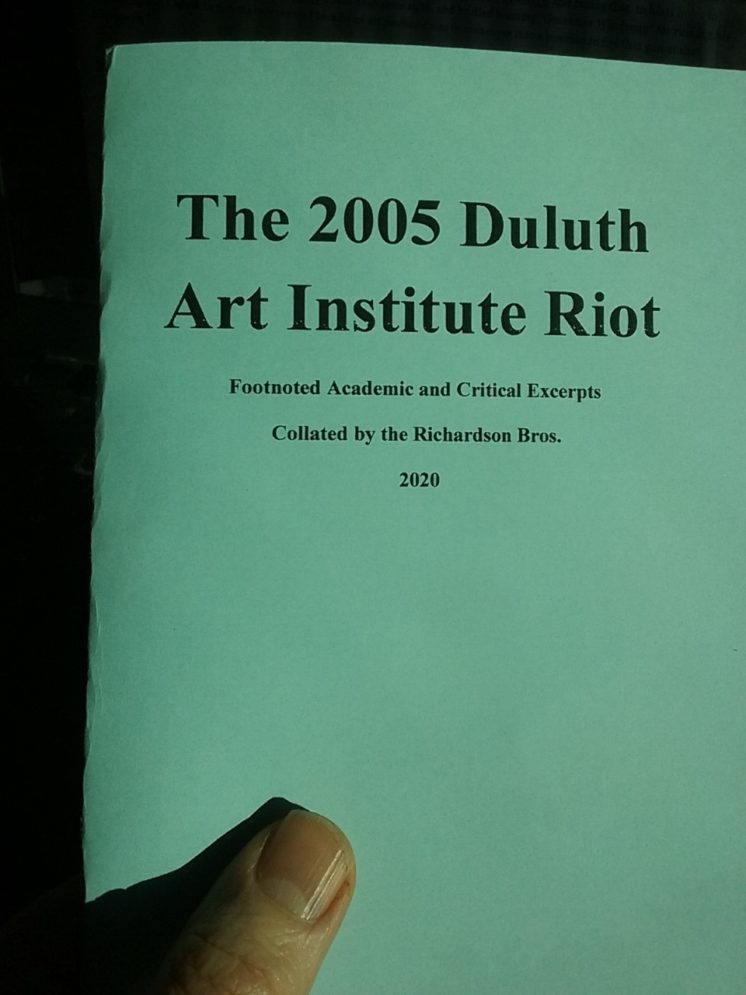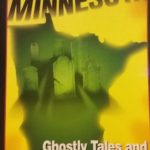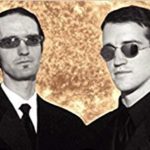The 2005 Duluth Art Institute Riot
Academic and Critical Excerpts, collated and footnoted by the Richardson brothers (Jim and Allen Richardson)
I. Footnoted excerpts From “The Duluth School,” Selected Proceedings of the 75th European Arts Metaphysics Conference, London, September 2013, p. 300, edited by Dinah Scoby
Excerpt I-1: “‘The Duluth School’ is a term first coined in the early 21st Century. It is also known as the Duluth Style, the Duluth Secession, Duluthism, the Zenith City Style, also (colloquially) the Duluth Scene.[1]”
[1] Early Anthropocene Culture, vol. III # 12, Spring 2011, p. 100. “The origin of the term ‘The Duluth School’ remains the topic of debate among linguists, critics, and editors. It has been variously ascribed to the Richardson bros., the writer Paul Lundgren, Duluth Art Institute curator Annie Dugan, and publications of both the Duluth Art Institute and the University-affiliated Tweed Museum of Art. During a sparsely-attended lecture at the College of St. Scholastica in 2008, the Richardson bros. denied ‘originating the term as a brainiac hoax.’ Lundgren is said to have verbally taken credit for the term during a bar-crawl in Two Harbors in 2009 but recently disavowed this report as apocryphal in a private correspondence. Painter Sarah Brokke can be faintly heard using the term in a video of a 2006 lecture at the Duluth Art Institute arranged by Dugan (video removed from YouTube in May of 2010 in a proprietary dispute). Neither the Duluth Art Institute nor the Tweed Museum responded to information requests by press time.”
Excerpt I-2: “Characteristics of the Duluth School include externalization of the subconscious, self-opposition, alienation derived from the city’s geographic remoteness, and a codified rejection of other art movements and major art centers like New York City, Los Angeles, Paris, and Seoul. This weird town in the middle of nowhere spawned an influential zeitgeist.[2]”
[2] Oxford Art Journal, vol. 36.5 issue 1 June 2013, pp. 467. “Generously referred to a mid-size city, Duluth’s population hovers around 100,000 people…. a zone of creative ferment, it is figuratively said that each of Duluth’s residents is either a writer, poet, stage performer, musician, visual artist, sculptor, videographer, or dancer… specific trends defied critical enumeration for some decades, only recently coming into focus in the early light of the 21st Century. While lacking the sheer breadth of major cities ten times its size, Duluth’s eclectic vibrancy, intimacy, and remoteness constitutes a cultural laboratory. Fecundity and experimentation nurture a depth favorably compared to art movements in any city in the world. Artistic and literary zeitgeists generally emerge from tight-knit neighborhoods, or from limited scenes of quite a small number of central figures; however, Duluth provides an example of creative cross-pollination occurring city-wide. Parallels between the Duluth School to the Lost Generation, the Beat Generation, the Vienna Secession, Dadaism, Situationism, and the lofts of SoHo have been noted in scholarly publications throughout the academic world, but also in museum cities as diverse as Calcutta, Buenos Aires, and Tokyo. Ironically, Duluth is so geographically isolated (sometimes referred to as ‘a dark satellite of Minneapolis’ and boasting a single ‘international’ airport the size of a waffle house) that its spirit of exotic, edge-of-the-known-world seclusion has bred a dogged individualism which rejects and reviles the rest of the art world. The Zenith City Style comments on itself and oblivion at the same time. In essence, Duluth is ‘a prince who has refused the crown’ (Duluth Mayor Don Ness, 2009 ‘State of the Arts’ speech delivered to University donors at the Congdon Estate).”
Excerpt I-3: “A feral art and music scene emerged from a diverse group of writers, performers, and visual artists, buttressed by the University influence and whipped into a frenzy by the city’s rowdy status as a world-class outdoor adventure hub/beer capitol.[3]”
[3] Duluth Diary: An Academic’s Search for Art, Adventure, and High Sex at the Apex of the World, Dr. Judith M. Raines (2013, University of London Press), p. 161. “The Duluth School constitutes an enigmatic movement that rejects its own designation as such, in part via a simple stubborn Midwestern refusal to consider that it is ‘anything special.’ An informal survey of UMD art majors in 2012 revealed that few apprehend the extent to which the Duluth School fails to recognize that it is indeed the Duluth School, despite at least 20 years of cited international recognition in the art theory world. This author found any suggestion among the Duluth intelligentsia that they had earned serious critical and academic recognition was met with violence. But this violence hides a cipher pointing to the violence of 2005, when artistically speaking, something unique and profound began here with the riot at the Duluth Art Institute.”
II. Footnoted excerpts from “Antecedents of the Duluth Art Riot,” Suzanne Bungen, Zurich University Open Repository and Archive, April 23, 2007
Excerpt II-1: “… the riot at the Duluth Art Institute in Minnesota can only be understood in the context of the destructive energies of Dada and the negationist art actions of the Situationists.[4]”
[4] Hermeneutic Anomics, vol. 24 #1 May 2013, pp 335-336. “The carnage dormant in any new art movement was expressed in the glib Dadaist conflation of random gun violence with the highest artistic act. This aberrance had been conceived of by performers hurling invective at the audience, and the audience response of tearing the theater to pieces…. Art riots are known the world over whenever a radically new idiom, form, or content is iterated. What makes the Duluth Art Institute Riot so singular is that it involved only a minority of actual art patrons. The riot was conceived of and orchestrated by professional art critics and historians, who claimed they were carrying out the documented wishes of the artists themselves.”
Excerpt II-2: “In the same breath, we might mention the writer JG Ballard’s account of conceiving the novel Crash. Ballard arranged an art exhibit of crashed cars with a topless woman serving drinks; the crowd became unhinged and a near-riot was averted. Ballard crowed that by triggering this explosive intersection of sex and death, he had achieved ‘total artistic success.’ This incident recalls the panic of the first cinema audience confronted with the image of an onrushing locomotive.[5]”
[5] Writers of the Psychosexual Age, Jackson Hughes-Griffith, Paradigm Press 2013, p. 172. “Two dozen sexual encounters have been documented at the Duluth Art Institute riot, matching the number of individual acts of arson.”
Excerpt II-3: “At the Duluth Art Institute, the first shots were fired — at a conceptual photograph — at 5:45 PM, and the last of the flames were extinguished in the Impressionist Gallery at 7:15 PM. In that 90-minute interval, 60 individual photographs, paintings, drawings, sculptures, installations, and two rare books were destroyed or damaged. Fewer than half face good prospects for restoration. Casualties include a trampling fatality, five broken bones, six concussions, a dozen people treated for light lacerations, and 75 treated for light burns and/or smoke inhalation.[6]”
[6] Journal of Authorial Intent, vol. 1, #6, Fall 2013, pp. 29-30. “The Duluth Art Institute found itself at odds with the Authorial Intentionalism theorists in the (University of Minnesota Duluth’s) Art and Literature departments. The art pieces on display had all been disavowed by their creators somewhere in the documents of art history. The show itself, ‘The Authorial Intentionalism Controversy,’ was perceived by adherents as a poke in the eye. Only fitting that in the melee, a giant champagne cork got to rolling around, crushing bones and praxis. Fistfights and scuffles broke out immediately after Professor Snodgrass fired the first bullet from a vintage four-shot rotating barrel Pepper-box at a silver gelatin print of the 1939 Expressionist photograph ‘Gossamer Windsong’ by Wendel Teaberry. The tumbling .22 caliber bullet at point-blank range left a layered hole crazed with flaking silver emulsion and powderburns that will be impossible to fully repair. The Professor then fired a second shot at the same photograph. He aimed his third powder charge at the next photo to the right in the exhibition, ‘The Chute Below,’ 1968, by the mad imaginalist Alain DuGarde (who admitted in interviews that he felt physically pained by the piece). The powder ignited in the cylinder but the barrel had become misaligned in the clumsy, transitional revolver design. The bullet blew the barrel off the gun, igniting the charge in the fourth cylinder in a chain-fire. ‘The Chute Below’ faces a major restoration battle and the DuGarde estate is sure to sue to prevent it. The gun’s self-destruction probably saved the next picture on the wall, the macabre 1899 self-portrait of Madame Contessa Weitzel who had once written the phrase ‘shoot the work… a picture’ in a fit of automatic writing during a 1948 salon.”
Excerpt II-4: “Few arrests were made and fewer charges were filed. As in the terror cells of asymmetric warfare, most of the suspects melted back into the population. Of the arrests, all comprised University art faculty and students, and all produced documentation suggesting a moral or legal basis for their actions.[7]”
[7] “Art Riot Rocks Duluth,” The New York Times, May 28 2007. “In his deposition, (Snodgrass) stated, ‘The gun was willed to me by the flamboyant art critic/shootist William Canard, with specific instructions to shoot Wendel Teaberry, and failing that, to blast holes in Teaberry’s work as if at a public execution. Teaberry’s been dead since 1986, and he died blaming “Gossamer Windsong” for ruining his relationship with Canard. In fact, the very reason I became an art professor was to maneuver into a position to fire that gun at that photograph.’”
III. Footnoted excerpts from “The Art Riot: What Do We Know?” Paul Whitehead, Northland Reader, p. 52, issue # 763, Nov. 21, 2012
Excerpt III-1: “The trampling fatality at the Duluth Art Institute riot was art critic and essayist W. F. Olsen.[8]”
[8] “What Does Intentionalism Want?” W.F. Olsen, Literature and the Question of Philosophy, edited by Marilyn Dosecki, pp.75-76, Baltimore: Johns Hopkins University Press, 2011. “A cult of intentionalism has developed in the Art and Literature departments at the University of Minnesota Duluth. Intentionalism has become enshrined as the central fact of any text or artistic expression in the region. The result has been academic and artistic pandemonium. Artists’ bios and literary histories are combed through for any cross words or doubt about the merit of their own oevre. Then their fantasies of the destruction of their work are carried out by art theorists and students steeped in fundamentalist intentionalism. Art saboteurs hunt down works that have been disavowed by their creators, destroying them in the museums where they hang. Dylanological texts are disparaged by intentionalist Dylan fans who nonetheless deny song lyrics are poetry — as long as the author himself only begrudgingly admits it. And ever since Dylan once disparaged Dylanology, the offices of American Literature professors who study him have been vandalized by intentionalists, as if ‘the author (is) God, with the critic presumably as priest’ (Dutton, 1987). Artists now weave intentionalism into the structure of their work. To wit, the timeless painting “Penguin on a Bicycle” by Duluth artist Adam Swanson, who declared the work must be destroyed after six months as a monument to impermanence. In the intervening time the painting sold to a wealthy donor who loaned it to the Tweed Museum of Art. After 6 months, intentionalist art terrorists infiltrated the gallery and wiped the image from the face of the world with a turpentine solvent.”
Excerpt III-2: “Homicide was suspected from the outset.[9]”
[9] “ArtCrime Beat,” Jeanette Witherspoon, p. 150, Artforum, May 2013. “(The speculation is) that Snodgrass may have been trying to shoot Olsen through the wall… Olsen had been seen directly behind the wall of the labyrinthine gallery looking at an etching by the self-loathing 18th century lithographer Johannes Blaten. But Olsen was on his way out when the shooting started…. It became apparent the entire (riot) was a premeditated art action, and Snodgrass’ shot functioned as the starting gun… It is possible Snodgrass knew the whereabouts of the art purloined in the ruckus, but he pled not guilty to all but the single gun charge… To destruction of property (assassinating two photographs and plaster damage to the museum wall) he pled no contest and produced documentation showing the photographers themselves wished their own work destroyed. He was acquitted by a jury of sympathetic intentionalists from the community.”
Excerpt III-3: “Olsen was the trampling fatality precisely because he was leaving early and passing through the door at the moment Professor Snodgrass began firing at the photographs.[10]”
[10] “The Postmodern Death of W.F. Olsen,” The New Yorker, pp. 91-92, April 2013. “There were fine pieces on display since contra the fashionable intentionalist assertion, an artist’s feeling about his/her work is boring. What Olsen objected to was how the show spotlighted intentionalism even as it contained an obvious sneer. Olsen wrote, ‘intentionalism must be rubbed out from the history of art criticism.’…. he has been portrayed in the media as an art critic when in fact he was an art critic critic, spearheading the New Art Criticism Criticism and Critical Theory Theory. His writing expressed contempt for ‘the intentionalist fallacy’ and he advocated against it in print, like the infamous exchange of letters with Snodgrass, for whom no work of art transcended its creator’s vision. Snodgrass and the intentionalists expended enormous energies divining artists’ intents… the prosecution failed to show… that Snodgrass thought Olsen attended to discredit intentionalism with a scathing review… the defense argued that even if Snodgrass caused a stampede at just the right moment to trample Olsen, the prosecution hadn’t proved intent… it was manslaughter or nothing.”
Excerpt III-4: “A crowd numbering approximately 100 people panicked and Olsen got bowled over in the bottleneck and did not arise. Another 50 art patrons remained behind rioting in the gallery space, composed of anti-intentionalist art-goers fighting the intentionalists’ orgiastic art destruction.[11]”
[11] “Theoretical Considerations of the Duluth Art Institute Riot,” Maynard Cochese, Art and Culture Review, #250, Jan-Mar 2013. “When strict intentionalists encounter Dadaism or Situationism, they go crazy precisely because the artists’ intentions are to… (draw) them into a revolution in everyday life. So the intentionalists at (UMD) started doing dérives and so on, and plotting an art-based society at the end of a gun as per Dadaism…. some claim there is no author, only language. ‘If you believe in authors, you’re a filthy positivist,’ the critic W.F. Olsen wrote. ‘As Derrida said, “there is nothing but the text;” or per Barthes, “the death of the author is the birth of the reader.”’ It was precisely these nihilistic sentiments that put Olsen squarely in the sights of the art revolution of Prof. Snodgrass, that brawling and murderous Caravaggio who once snarled, ‘Death of the author? I’m more interested in the death of the critic.’”
IV. Footnoted excerpts from “A Post-Structuralist Perspicacious Meta-Analysis of Neo-Situationism,” Michal Stehlík, Ph.D., Dean, OPERA FACULTATIS PHILOSOPHICAE UNIVERSITATIS CAROLINAE PRAGENSIS, Charles University of Prague, Fall 2013.)
Excerpt IV-1: “The Duluth Art Institute Riot sparked a genuine art revolution in Duluth, Minnesota USA. Like the Situationists, a large majority of Duluth’s population consciously lived everyday life as art for a period of roughly six months.[12]”
[12] American Journal of Sociology, #3, vol. 119, 2013, p.207. “The Duluth Art Institute Riot spilled into the city, spreading like an infection. A fervor for creation activated as residents chased novel desires, feelings, and encounters. In the early stages of this externalization of Duluth’s collective unconscious, art was hung around town and everything was decorated. Soon a Dadaist slate of politicians was elected, and the cityscape became dominated by large, surreal public works… examples include the continual mass repainting of the streets and buildings, numerous erections of large statuaries, sidewalks turned into trampolines, and the transformation of the downtown area into a musical instrument with architecture reminiscent of Gaudi. Against this backdrop, the population engaged in one long, rolling party… a profusion of art openings, film festivals, live performances, parades, carnivals, orgies, and feasts.”
Excerpt IV-2: “The central act of Situationist practice was the dérive, or drift. The typical dérive was a small group of friends or associates passing through an environment guided by nothing but fleeting desire in a search for novel feelings and encounters. In the case of what came to be known as the Duluth Secession, the city was swept with waves of ‘fleeting’ desire for an extended period.[13]”
[13] The Journal of the Sociology of Art, #1, vol. 12, 2013, p. 25. “The production of the dérive as art, instead of the production of commodifiable objects, constituted a radical negation of society. The dérive contained nothing sellable, only unmediated subjective experience, and it was not meant to be presented to an audience. Attempts to market drift-based, first-person video games met with failure. The relative success of a dérive could only be judged by its direct participants on qualities such as spontaneity, immediacy, the novelty of random encounters, varieties of ambiance, and whether each participant felt they had fully lived…. The riot at the Duluth Art Institute could only have triggered a city-wide, six-month dérive in the larger context of widespread anomie and frustration. The ground had been set for a long time through the obscure critical writings of the intentionalists in the University’s Art Department. It amounted to a slow-burning fuse that cascaded into a universal demand for 100% authenticity.”
Excerpt IV-3: “The collective life of Duluth during this period may be considered the largest single artwork of all time, and subjected to art criticism.[14]”
[14]The Journal of Aesthetics and Art Criticism, #10, vol. 10, 2013, pp. 99-101. “It was like the Commune of May 1968, but in an art city inhabited by nothing but poets, painters, and performance artists…engaged in an anarcho-communist potlatch lifestyle of unfettered creativity. Based on its monumental scale alone, Duluth clearly represents the most successful iteration of the artistic parameters set in ’68…which includes the Situationist dérive. The scale was fractal; every house and street overflowed with enthusiastically-received art activity at all hours, a continuous four-dimensional canvas. The city seceded from the world in ways only imagined in the wildest dreams of Hugo Ball….even leaving aside the performance aspects, the architecture was utterly transformed into the world’s largest installation piece…Walkways, tunnels, ziplines, and roller coaster tracks connected every structure in town. The sky filled with colorful hot air balloons, skydivers, hang gliders, and ultralights trailing gaily-painted banners. Art car traffic jams crawled past psychedelic murals and sculptures…overrun by parades, marching bands, bellydancing firespinners, and parkour marathons.…Those six months constituted a full spectrum of contrasting tones, unique textures, flowing movement, color, and use of negative space. Although largely forgotten and dismantled…the upheaval produced a legacy of writing, visual art, film, and video that is still being assessed by theorists and the art world…artistic success on a grand scale….Detractors quibble about whether the participants met their own artistic standards, or to what extent the form and content of a city during a certain timeframe may be considered a coherent work of art. But the intentionalists appear to have carried the day….Only later would investigators uncover the secret that enabled Duluth’s mutation into an anarchist’s paradise: the mass embezzlement of corporate funds…(by) libertarian hacker sympathizers, and corporate insiders, expressing themselves by sticking it to the man.”
Recommended Links:
Leave a Comment
Only registered members can post a comment , Login / Register Here















2 Comments
vicarious
about 4 years agovicarious
about 4 years ago